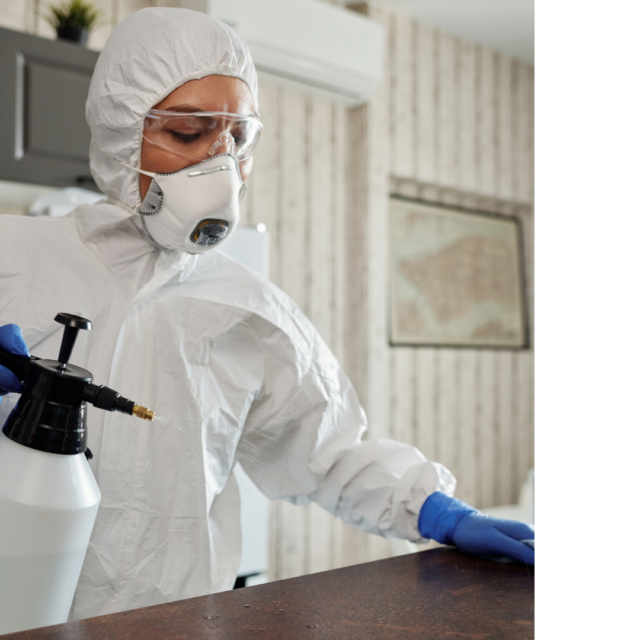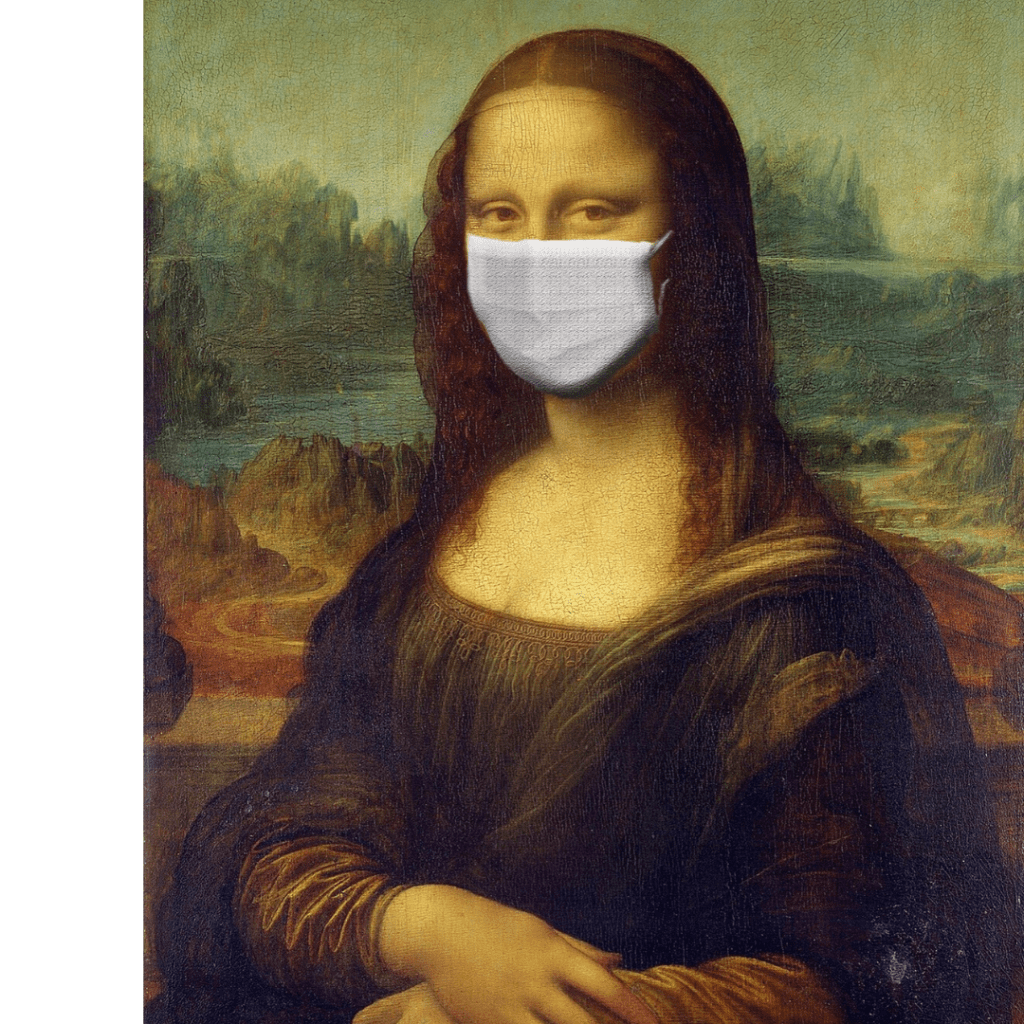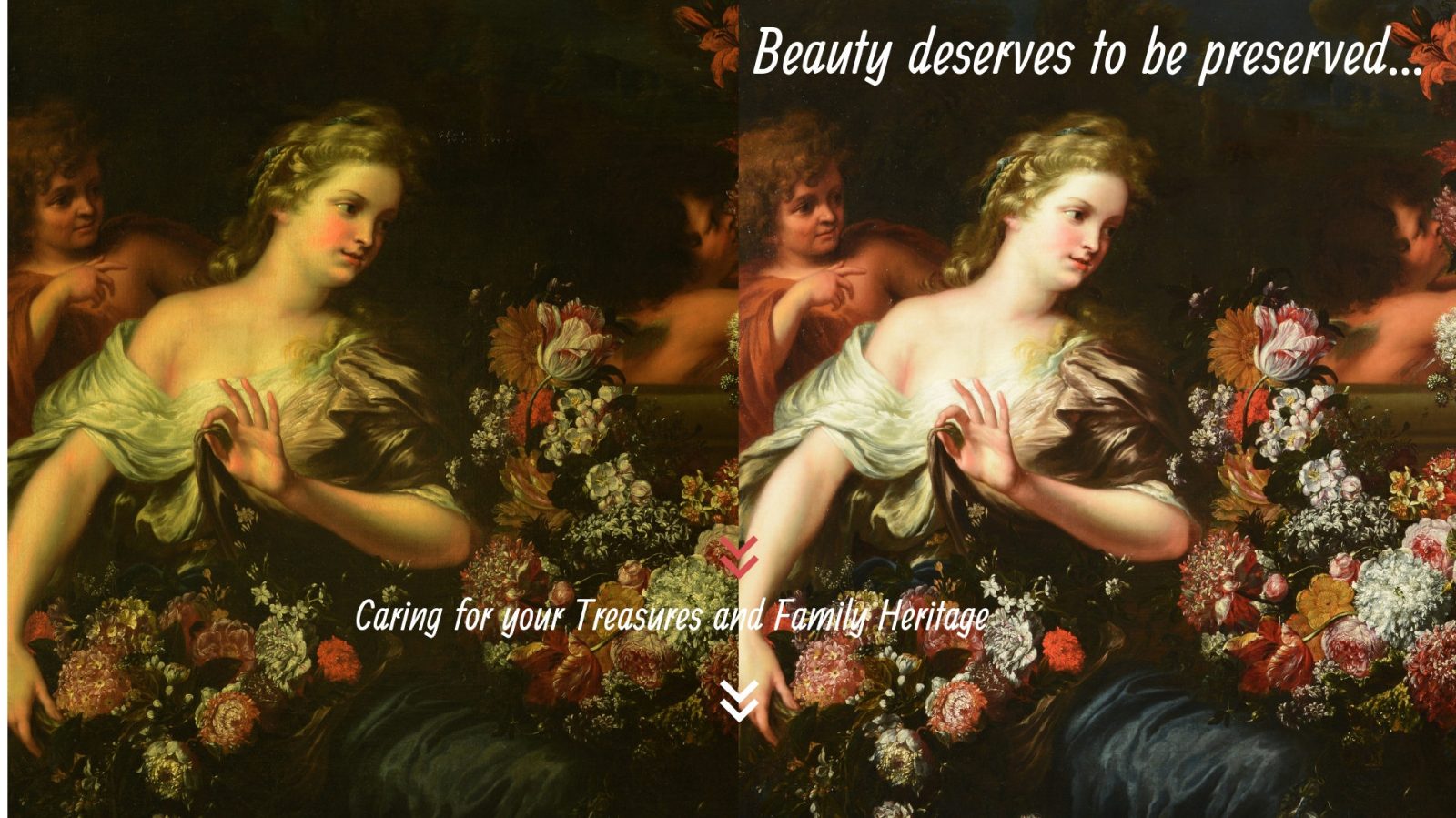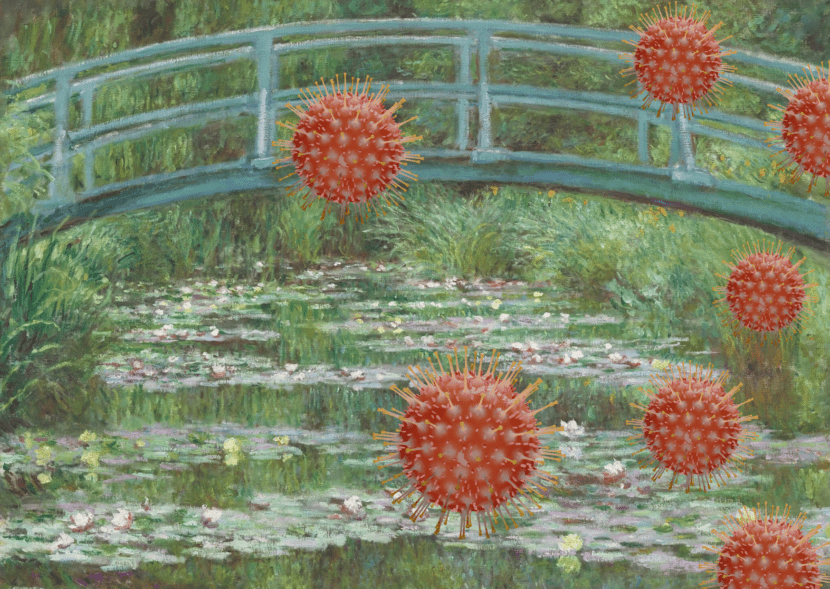COVID - 19 AND ART:
A Meditation on Preservation and a Footnote on Creation
Overview
Covid-19 presents unique challenges to art collection maintenance. The frontal assault on the virus incorporates aggressive cleaning and sanitizing. People are monitored and are encouraged to work at home as much as possible. Surfaces are aggressively treated with disinfectant. These actions are done in good intent, but they present a problem for art collections and preservation.
So, faced with this new reality, the main question is: How can we disinfect surfaces near precious art pieces, and even the artworks themselves, without damaging the piece?
Keep in mind that harm to artworks often will not be evident right away. Microscopic degradation from harsh chemicals, trace fumes and sanitizer droplets will not be obvious right away and will take a long time to manifest. When it does, the damage to an art piece may be irreparable. Art conservation was a delicate act even before COVID-19, let alone now. A feasible solution is to treat art collection maintenance as a series of concentric layers, like an onion.
Interior: Disinfecting Spaces Away from The Art
Peeling back a layer, we enter spaces that are not directly connected to the art itself. While valuable of course, these areas are not subject to the strict standards of preservation reserved for classically one-of-its-kind masterpieces. The EPA has a list of antimicrobials for surfaces. Here are a few examples of what you can use:

Quaternary ammonium compounds (QUACs): This anti-viral disinfectant is often mixed with detergents, chelating agents and PH adjusters to improve their efficacy. Be very careful if you decide to use this material to disinfect your home, QUACs have harmful effects on artworks and tend to leave residues on surfaces. Please make sure you rinse it carefully.
Household Bleach: The FDA recommends to use an EPA-registered sporicidal disinfectant for the disinfection of units that may have been contaminated. Please privilege the use of an EPA-registered sodium hypochlorite products
if possible, alternatively generic versions of sodium hypochlorite solutions can also be used. Be mindful though, that sodium hypochlorite can damage surfaces such as metals. Please keep your artworks away from bleach and other harsh chemicals.
Alcohols: Use concentrations of 70:30 alcohol in water of either ethyl alcohol or isopropyl alcohol. Alcohol can disinfect your surface from corona-type viruses in 30 seconds. However, please be mindful that acrylic surfaces could be damaged in the process. Also, please avoid using alcohol on wood surfaces.
Please note that although all of these products successfully disinfect your environment, they will damage your artwork.
Disinfecting Surfaces Surrounding your Art
Here we get into the real complications of disinfecting the areas close to your art. While not a magic bullet, you could disinfect the surrounding area to your art collection with Thymol. This essential oil, which belongs to the family of thyme, has strong antimicrobial and antiviral properties and it is more environmentally friendly.
How to Handle Art Surfaces in Times of Covid-19
At the core of our onion we have the art itself. As we all know by now, the World Health Organization (WHO) has confirmed that people can catch COVID-19 by touching contaminated surfaces and then touching their faces, their mouths, noses or eyes.
Since art collections are not handled very frequently and considering that the virus naturally dies after a few hours outside the human body, the chance of transmission is possibly low.
Should you use hand sanitizers prior to handling your artworks?

Ideally, it is always best to handle your artwork using cotton gloves. However, if you do not have any available, washing hands with soap and water beforehand is also acceptable. Please be mindful of not touching the paint layer with your fingers as our skin contains oils that can permanently mark the painting. Furthermore, some hand sanitizers could also leave residue on your artworks, potentially damaging them.
How to Disinfect your Art Surfaces
If you are wondering how you could disinfect your art, our advice to you would be not to touch your precious treasures. Remember, time is a disinfectant. The coronavirus becomes inactive on common surfaces within, at most, 9 days after exposure.
If for any other reason you feel the painting needs to be cleaned, contact your trusted art conservator or Stella Art conservation. We are specialized in museum quality art conservation and restoration of paintings, sculptures, artifacts, and other artworks, from ancient to contemporary.
Our expert art conservators have superior knowledge in traditional as well as innovative fine art conservation techniques and are capable of restoring highly damaged artwork while preserving the artist’s original intention.
Summary
Coronavirus or not, priceless art pieces are surrounded with layers of protection; all play their part in making sure artifacts from varied chapters of the human story remain preserved and available for maximum benefit to current and future generations.
Though we have gone over some aspects of art preservation in light of this pandemic, let’s end on a more upbeat note: art is an act of creation not just preservation. It is a constant, ever-evolving, dynamic, and inescapable facet of our lives. Someday, what we might consider as goofy pop culture, sick vulgarity, the enemy’s propaganda, or pretentiously elitist frivolity may be art to an audience whose perspective of our creation we can hardly imagine.
Whereas covid-19 imposed isolation and quarantine is concerned:
“Solitude gives birth to the original in us, to beauty unfamiliar and perilous – to poetry. But also, it gives birth to the opposite: to the perverse, the illicit, the absurd.” – Thomas Mann.
If you are interested in learning more, you can read the CCI Technical Note, April 17, 2020:
Caring for Heritage Collections during the Covid-19 Pandemic.


